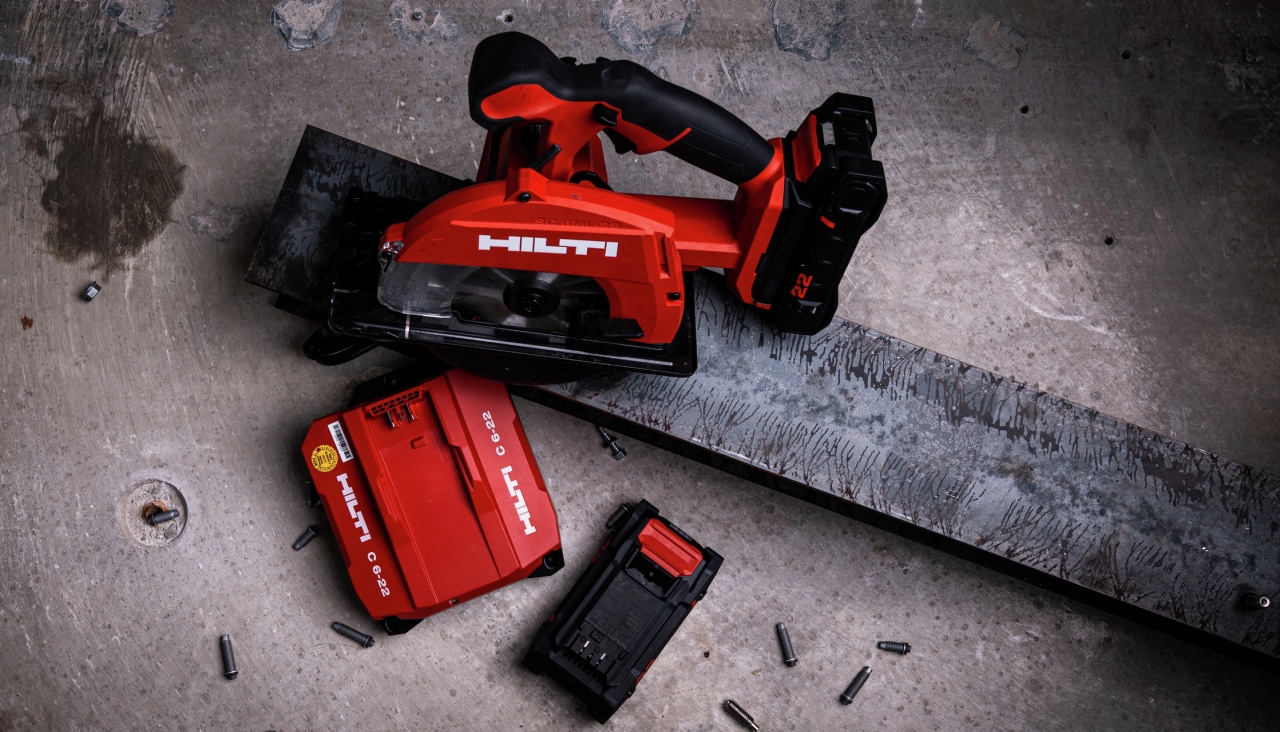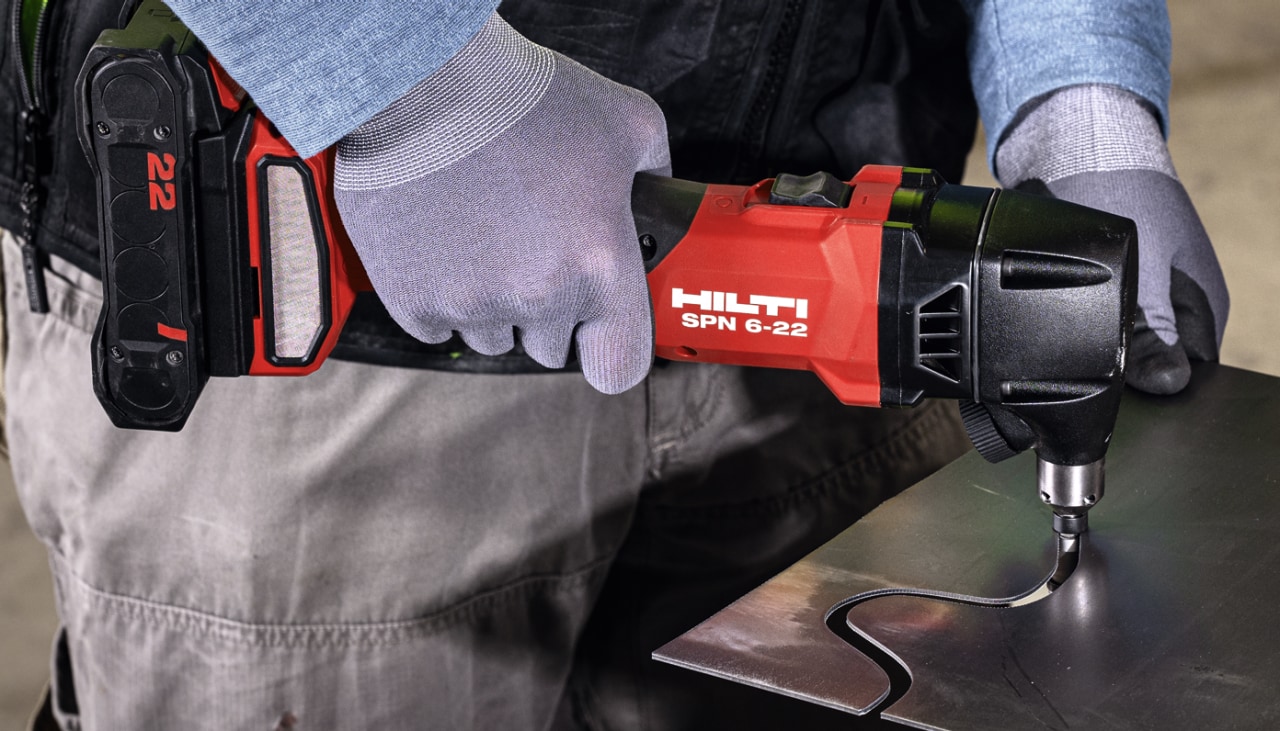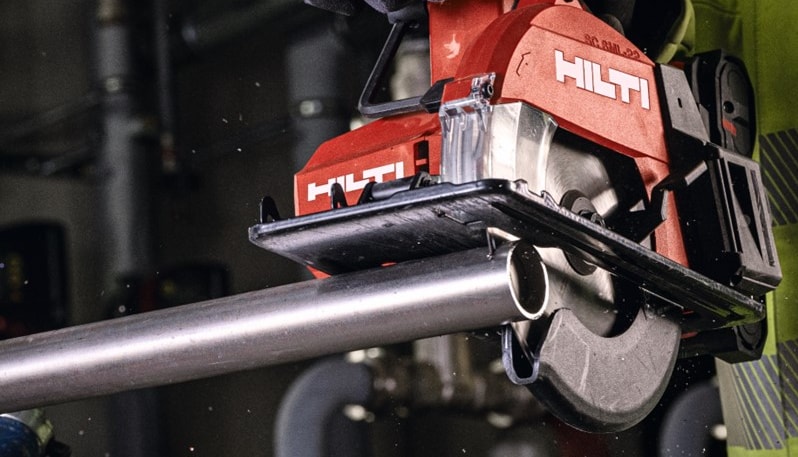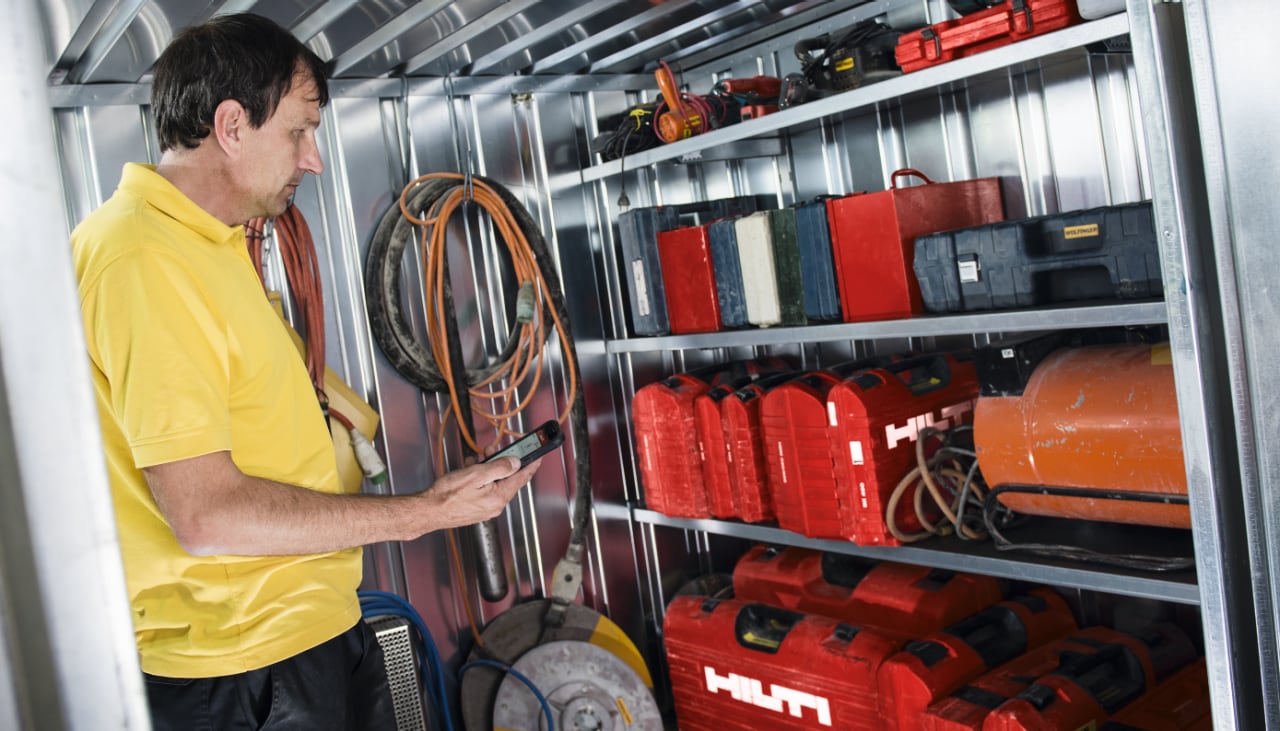
METAL CUTTING TOOLS - GOING BEYOND GRINDERS
Reduce inefficiency and choose the best tools for cutting metal
When cutting or working with metal, many professionals will default to using an angle grinder to get the job done. But while a grinder is capable of cutting through most metals, there are other tools which are more than likely to get the job done quicker and potentially cheaper.
And as a new or existing Hilti customer, you can lease these tools as part of our Hilti Fleet Management service for a small monthly fee.

WHY USE BETTER METAL CUTTING TOOLS?
- Over 75% Cheaper: When using a band saw to cut a 35mm steel pipe with 4mm thickness, the cost per cut is 76% lower compared to an angle grinder (0.46 GBP vs 0.11 GBP)*
- Up to 79% quicker: When using a circular saw or band saw to make 100 cuts, including blade change time, the circular saw was 79% quicker, while band saw was 39% faster vs a grinder.
- Less time replacing discs: While a grinder can be versatile for a range of tasks, it can lead to more time replacing and removing worn discs vs using the right metal cutting kit.
- No lost time from overheating: If you’re using an angle grinder on tougher materials, when a better tool offers optimum performance, it may be prone to shut-off from overheating
Some of the metal cutting products you should consider

Choose a faster and cheaper way to cut metal
Like most professionals in construction, we rely on our tools across a range of projects and applications. So if you compare the cost per cut of an angle grinder against other metal cutting tools, it makes sense to use products that get the job done quicker or cheaper. Especially from a commercial and business perspective.
There are several tools to choose which can help you achieve performance, profit and productivity for metal cutting applications. These include band saws, recip saws, circular saws and more.

The benefits of cold cutting tools vs an angle grinder
We’ve all been on site and used a tool that can do the job, such as a grinder or multi-tool. This is either because it’s close by or because of old habits. But what you might not realise is that the convenience of reaching for the nearest tool may be costing you time and money compared to using the correct cold cutting metal tools. In addition, some of the benefits of using a cold-cutting tool instead of an angle grinder include:
- No need for hot work permits – usually required for insurance purposes on tools and applications that produce heat and friction in a localised application.
- Reduced labour costs - as you don’t need an additional person to check for fire risks while using an angle grinder.
- Potentially better for safety with reduced sparks or burn risks. It also means not having to wear or change into flame retardant clothing.
- Eliminate the need for re-work or galvanising surfaces after hot cutting with an angle grinder – especially if you can use a tool that delivers precise cuts.

Safety
Most modern angle grinders come with a host of safety features, but other tools can be safer to use. Using an alternate tool can mitigate some of the risks you need to consider:
- Flying discs are one of the most common risks when using a grinder, which can lead to serious hand, arm or groin injury. It can be caused by using discs which are cracked or have breaks. Alternatively, circular saws and band saws feature guards to protect users, while operating at lower RPM speeds to mitigate some of this risk.
- The control of dust is always a risk on any jobsite. Because of how an angle grinder is used and their design, you won’t find many grinders that offer a dust port. Some alternative tools, like circular saws, offer this feature. While after-market accessories can be used, they are not always compatible or effective when collecting dust.
- Vibration is a particularly big consideration when using these tools. If a grinder typically has a m/s2 vibration magnitude value of 5, the maximum amount of time you can normally use it for is around 2 hours**. Tools with lower m/s2 vibration magnitude, such as a band saw with 0.8 or a circular saw with 0.5 can potentially do the job quicker and with less vibration risk to the user.

Can I track my new metal cutting tools?
If you’re an existing Hilti fleet customer and decide to add some new tools to your fleet, you can track their location with Hilti ON!Track. This additional service can be set up through your Account Manager, but new customers can also take advantage of this service by getting in touch.
*Cost per cut based on cutting 35mm steel pipe (4mm thickness) with Hilti AC-D SPX 125x1.0 blade 13 times vs Band saw blade SP 44-7/8" 14/18 266 times.
**Based on European Directive 2002/44/EC







